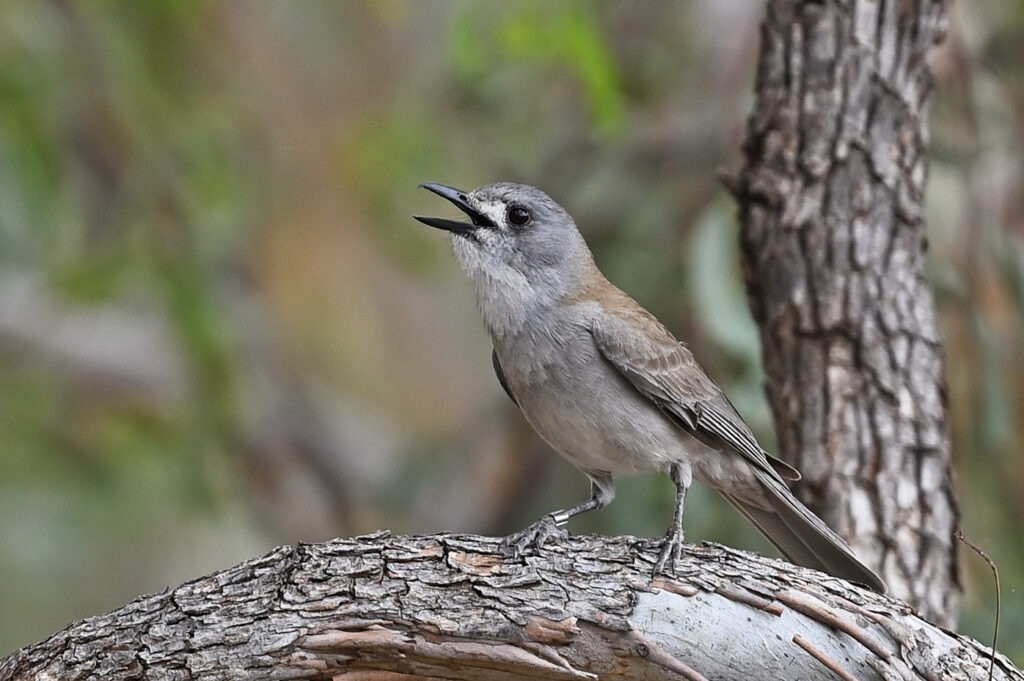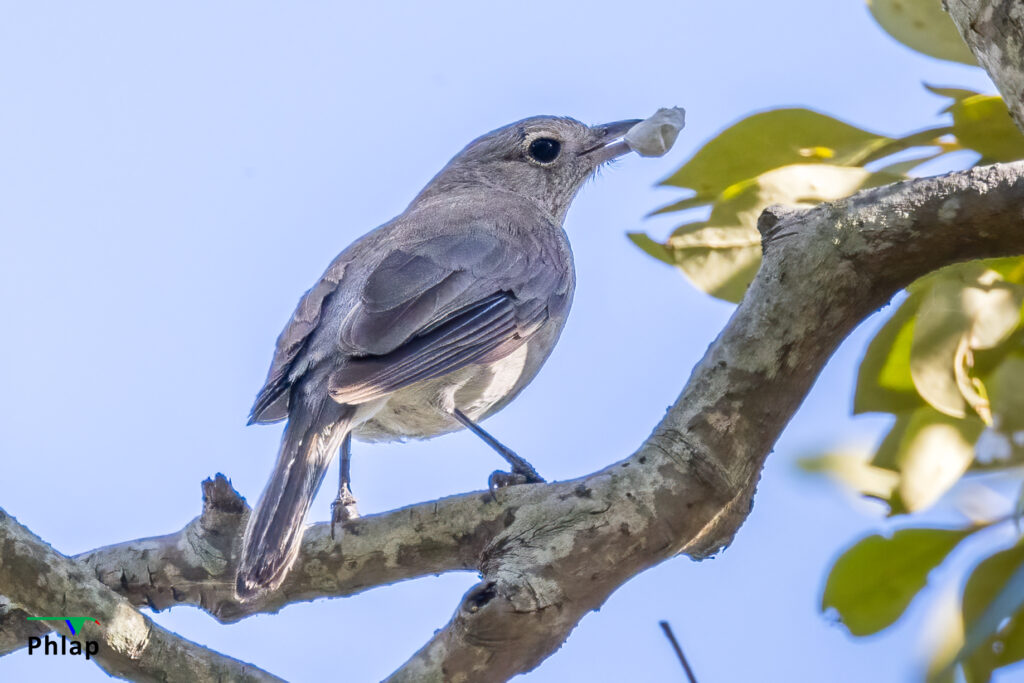In its muted greys and browns the Grey Shrikethrush may be considered dull and unremarkable – that is, until it opens its throat and issues forth the clear, ringing phrases of its considerable song repertoire. In this moment it becomes unforgettable. So many adjectives have been ascribed to its vocalization over time, but the consensus is that it is rich, melodious and uplifting. And the ‘harmonica’ part of its scientific name is testament to this.

The Shrikethrush genus was first described and named by Vigors and Horsfield in 1827. This bird is neither shrike nor thrush. The name Colluricincla – collurio ‘shrike’ from Ancient Greek, was given, it is thought, for its beak with a slight hook at the end, reminiscent of ’Old World’ shrikes and cinclos ‘thrush’ for its similarity in form to ‘Old World’ thrushes. Australasian shrikethushes are members of the whistler family.
Of the shrikethrushes occurring in Australia the Grey Shrikethrush is the most common and is dispersed in a wide range of habitats. It also occurs in coastal New Guinea. This sedentary species can be found in all but the most arid regions of Australia mainly inhabiting open forests and woodland. Well represented in Eucalypt forests and in Acacia shrubland, it can also be found in riparian corridors often dominated by eucalypts, paperbarks and casuarinas.
The Grey Shrikethrush is a stocky yet streamlined medium sized bird with an upright stance and a moderately long tail. It has a proportionately large, rounded head (formerly known as a ‘thickhead’ as all members of the whistler family were back then.) A large, dark eye gives it a somewhat gentle expression. Its subtly-hued plumage is dapper and looks smooth to the touch. Its bill is robust with that slight hook. Rictal bristles can be seen on close inspection. It has sturdy legs and is well suited to moving effortlessly throughout a variety of habitats both terrestrial and arboreal.
A sexually dimorphic species, the adult female has a paler tinge of brown on the mantle, more of a ‘wash’ than that of the adult male. She has greyish lores instead of the more noticeable white lores of the male and a white eye ring rather than the grey of the male. The female’s beak is greyish with a pale lower mandible in contrast to the black bill of the adult male. She has a finely striated throat and upper breast rather than the white grading to light grey throat and underparts of the adult male bird. Both sexes have dark grey legs and feet. Juveniles have mid brown upperparts with rusty edges on wing feathers and eyebrow. Their underparts are white with dark streaking.

Singing throughout the year but more often in spring and in the breeding season, a common call is a sequence of fluty notes with considerable carrying power, as annotated by Peter Slater, “pip pip pip pip hoo-ey” with an upward inflection at the end. This is frequently interspersed with a louder one or two note trill, sometimes piercing, which appears to be a contact call. I recently watched a female busily foraging in Eucalypt foliage at 6.00am at Oxley Creek Common and she was engaging in a delightful Pianissimo song punctuated by a muted one note contact trill. She then flew off swiftly with strong wing beats alternating with a shallow glide as is typical of the flight pattern. The Grey Shrikethrush has also been recorded as being an accomplished mimic.
Invertebrates mostly, insects, spiders and molluscs as well as vertebrates including frogs, lizards, small birds and nestlings make up the bulk of its diet augmented with vegetable matter. Foraging at all levels, it can be seen searching for food amongst fallen logs, gleaning expertly amongst foliage or probing tree trunks and boughs singly or in pairs. Interestingly, the Grey Shrikethrush lives up to its label of ‘shrike’ by preying on small mammals and other birds. Its technique of smashing snail shells on an anvil stone or hard surface also aligns it with its other namesake – the ‘Song Thrush’, which is well known for this behaviour.
Breeding between July and March the Grey Shrikethrush builds a cup-shaped nest secreted in a tree trunk, hollow or other suitable crevice. It is woven from bark strips and leaves and is neatly lined with rootlets and fine grasses. Usually three creamy- coloured eggs with bold brown splotches are laid. Both parents share incubation and take care of the young which will hopefully mature into a new generation of captivating vocal performers.
References:
- Higgins, P.J. and Peter, J.M. (2002) ‘Handbook of Australian, New Zealand and Antarctic Birds, Vol 6: Pardalotes to Shrike-thrushes.’ (Oxford University Press: Melbourne)
- Lester, Nita, C. (2010) ‘ Brigalow Birds, Birds of Myall Park Botanic garden and surrounding region.’ (Lesterlyons Publishing: Brisbane.
- Beruldsen, G. (1980) ‘A Field Guide to Nests and Eggs of Australian Birds.’ ( Rigby Publishers Limited: Brisbane.)


